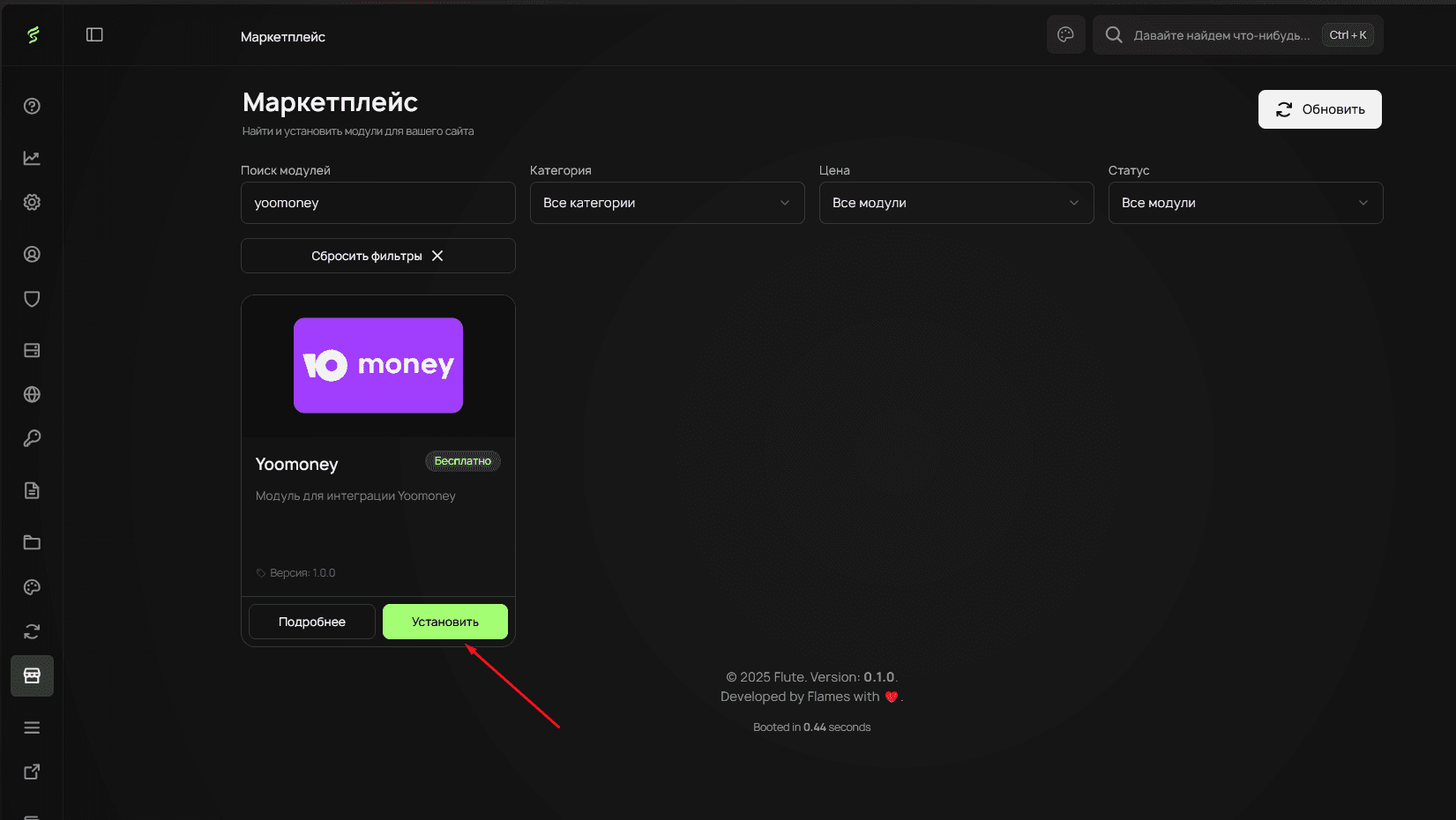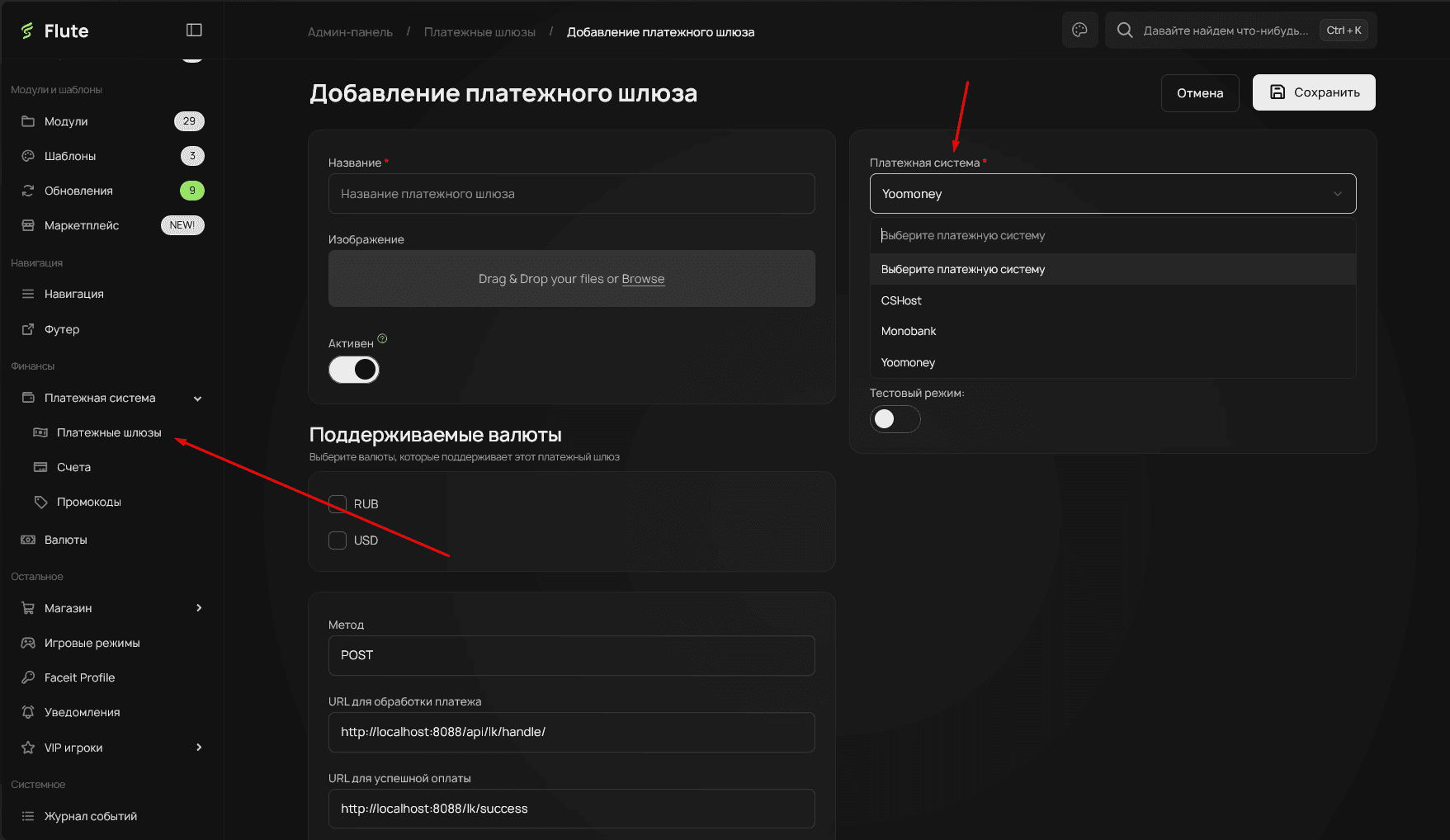Setting Up Payment Systems
Flute CMS supports a wide range of payment systems for automatic user balance replenishment. The system allows accepting payments through bank cards, electronic wallets, cryptocurrencies, and other popular payment methods.
If you need a payment system that’s not in the available list, you can request its addition in our Discord .
To configure payment systems you need to have admin.payment or admin.boss permissions.
Preparation for Setup
Requirements for working with payment systems
Before starting configuration, make sure the following conditions are met:
Active Flute key — to download payment system modules you need a valid access key to the Flute CMS platform.
SSL certificate — most payment systems require a secure HTTPS connection for payment processing.
Configured currencies — currencies that will be used for payments must be created in the system.
Installing Payment System Module
Download through admin panel
Go to Admin Panel → Marketplace. Find the needed payment system in the list of available modules.
Make sure you have a valid Flute key installed for access to the module platform.

Click the “Install” button next to the selected payment system. The installation process will take a few seconds. After completion, the module will automatically appear in the list of available payment systems.
Manual module installation
If automatic installation is unavailable, the module can be installed manually:
- Download the module archive from an official source
- Go to the
Modulestab and drag the archive onto the page - Wait for installation and activation. If it doesn’t appear - refresh the module list.
Setting Up Payment Gateway
Creating new gateway
After installing the module, go to Admin Panel → Payment Systems. Click the Add button to create a new payment gateway.

Configuring connection parameters
Each payment system requires unique parameters for connection. Let’s look at configuration using YooMoney as an example:
Recipient identifier — shop identifier obtained when registering with YooMoney. (Wallet address)
Secret key — secret key for verifying payment authenticity.
Test mode — enable for conducting test transactions without real money debiting.
Notification URL — address for receiving payment status notifications (generated automatically).
Exact parameters and their names depend on the selected payment system. Refer to the specific provider’s documentation for detailed information.
Configuring currencies and fees
Supported currencies — select currencies in which the system will accept payments.
Minimum amount — specify the minimum payment amount for this system.
For the payment gateway to work correctly, you need to enable support for corresponding currencies in system settings.
Testing Payment System
Conducting test payment
After configuration, be sure to test the payment system operation:
- Enable test mode in gateway settings
- Create a test payment with minimum amount
- Check correct redirection to payment page
- Make sure payment status notification is received
- Check funds crediting to user balance
Solving Typical Problems
Payments not processing
Check settings — make sure all connection parameters are correct.
Check SSL — many payment systems require a secure connection.
Check notification URL — address must be accessible from outside and respond correctly. Also in the cashier settings, the “POST” notification method must be enabled.
If you encounter payment problems, refer to the specific payment system’s documentation or our Discord .